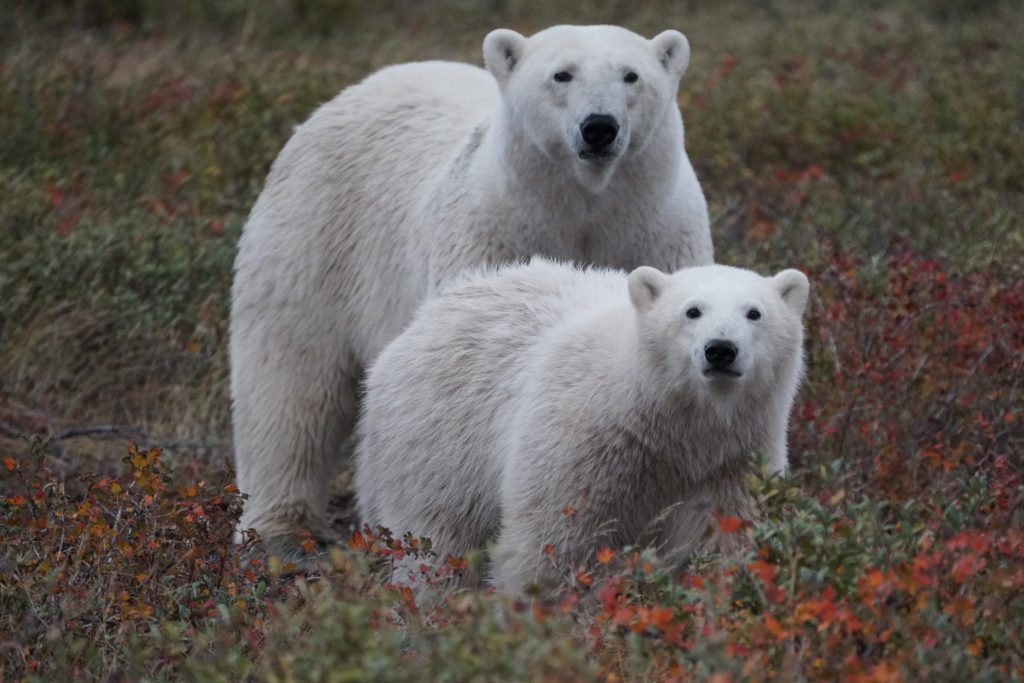
We had the honor of walking with a polar bear mom and cub at Nanuk Lodge in Canada
All bears, to some extent, are misunderstood. We think polar bears fall into the totally misunderstood category
First, some polar bear facts. With only an estimated 20,000-25,000 polar bears left in the world, most of us will never actually get to see one in the wild. But if you do, you are most likely to see one in Canada where 60% of the world’s polar bear population lives.
Where else do they live? Well, they also live in ice-covered Arctic seas in Alaska, Greenland, Norway, and Russia.
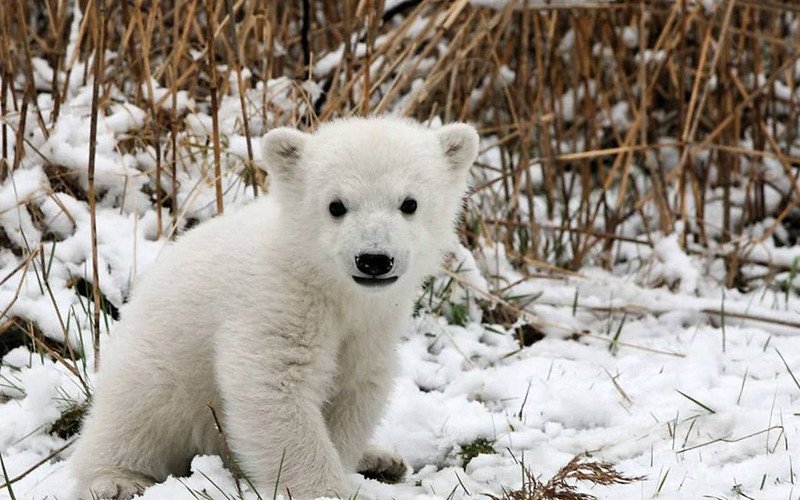
Polar bear cubs are born blind and weigh less than 2 pounds. Photo: Tableatny/Flicker
An adult male can weigh 1400 pounds and measure 10 feet tall when standing, but how about a baby? They weigh less than 2 pounds when born and are blind.
For the first few years of the bear’s life, the baby cub learns to hunt from its mother, with seals being the primary food source. Unfortunately, only about 1 in 3 cubs survive to become adults.
Why so few? There are many reasons which include starvation, falling prey to wolves or other carnivores and even drowning while swimming long distances in search of food. Being a polar bear is not an easy life!
More Polar Bear Facts
![]()
The only predators of adult polar bears are humans. Wow!
However, in a rare case of international cooperation, all 5 countries with polar bear populations have banded together to try and prevent polar bear population declines.
In 1973 an agreement was signed banning hunting and establishing strict rules for killing or capturing polar bears. Populations have rebounded but now face different obstacles.
The biggest threat today? Climate change resulting in disappearing ice. Without adequate ice, polar bears can not hunt. So without worldwide mitigation of greenhouse gasses, populations of polar bears will continue to decline. Yikes, not good.
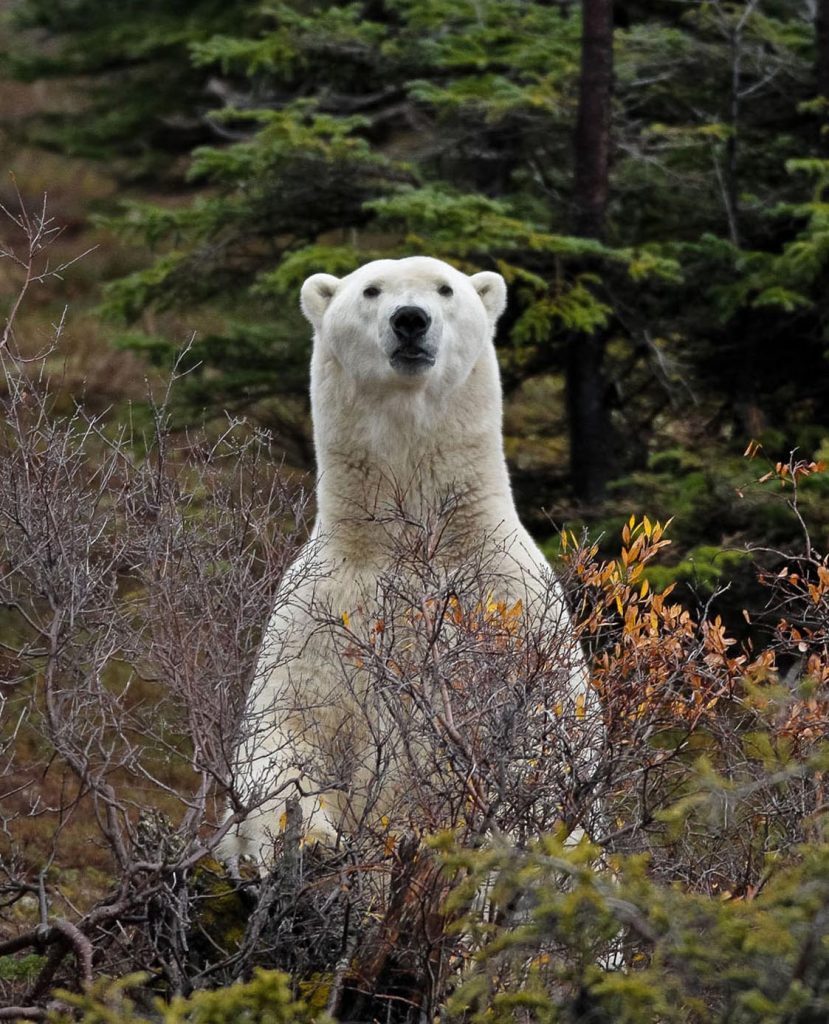
Humans are the only predator of adult polar bears. Photo: Pete Zaluzec.
Our Experience
![]()
In September 2017 we (Loti & Dale) had the life-changing experience of walking with polar bears (see our blog “Walking With Wild Polar Bears”. First, we flew to Winnipeg, Canada and visited the number one polar bear exhibit in the world at The Assiniboine Zoo where you can actually walk under the bears swimming.
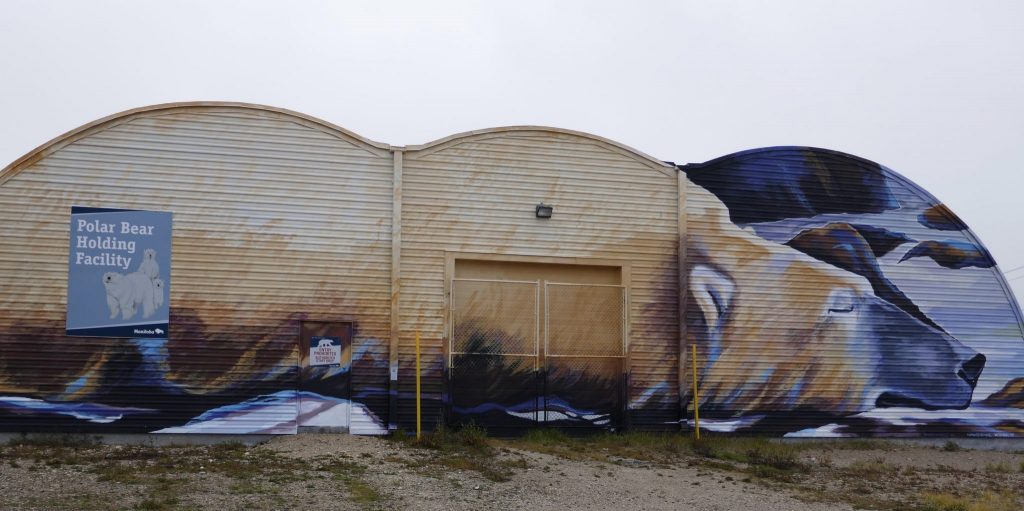
The polar bear jail in Churchill, Canada where bears stay for 30 days if they have become a nuisance
Next, we flew to Churchill, Manitoba which is considered the polar bear capital of the world. They even have a polar bear jail. If a bear gets too close to town, it is captured and held in “jail” until it can be moved away from the town.
And finally, we flew to Nanuk Lodge for 5 days of walking with polar bears, black bears, wolves, moose and millions of birds. The highlight was our encounter with a mother polar bear and her cub frolicking within 50 feet of us. Of course, the wolf pack of 18 wolves with their 10 cubs was pretty cool. It just doesn’t get much better.
How Can We Help?
![]()

A mother & cub polar bear hunting for food. Photo: Pete Zaluzec
Polar bears are listed as Vulnerable by the IUCN. One of the main threats to polar bears today is humans. Many people irrationally fear bears because of media sensationalism. But more importantly, there is a huge disagreement on whether polar bear populations are declining, stable or increasing. How do you protect them when no one seems to agree?
So what can we do? We can focus on climate change as we know it will negatively affect the bears.
- Vote for government officials who want to tackle climate challenges.
- Write to your elected officials. Tell them you support measures to address climate change.
- Do everything you can to reduce your carbon footprint. Drive a hybrid car (we do), eat local food that is not transported from long distances, use less power. There are hundreds of things you can do.
If you are an artist, consider donating some of your art proceeds to climate issues. We are using Dale’s sculptures to raise awareness and funds for polar bear conservation.
His sculpture of a polar bear getting ready to jump off a piece of ice is called “Leap of Faith”. We are looking for a good home so let us know your ideas at [email protected]
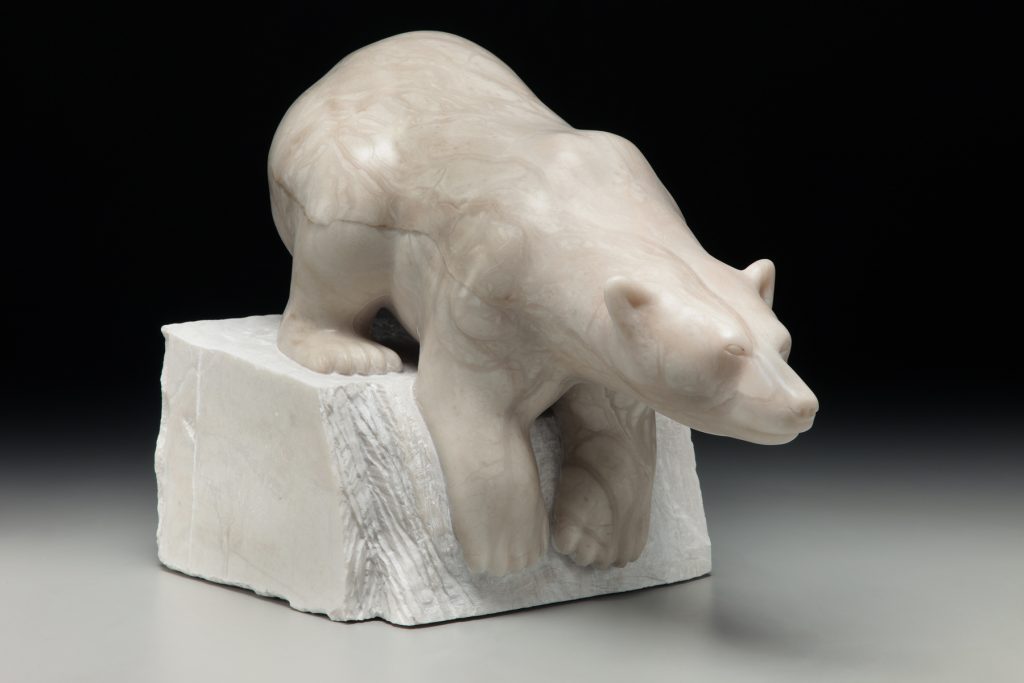
Leap of Faith, a polar bear sculpture by Dale Weiler made of Colorado alabaster
Learn More
![]()
- The 35 Easiest Ways To Reduce Your Carbon Footprint.
- Polar Bear by National Geographic
